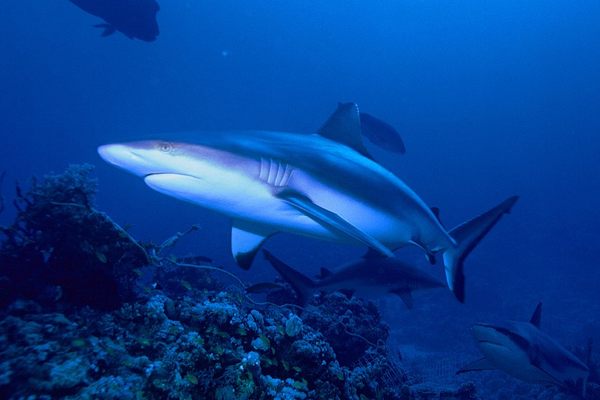The Miracle of the Shark ‘Virgin Birth’
As more cases of sharks reproducing asexually emerge, scientists are reversing a lot of assumptions about parthenogenesis.

A zebra shark pup at the U.K.’s National Sea Life Center. (Photo: Gp258/CC BY-SA-4.0)
Australia’s Reef HQ Great Barrier Reef Aquarium is the site of a “virgin birth”—the latest in a recently discovered phenomenon that is changing our understanding of reproduction strategies.
Leonie, one of the aquarium’s zebra sharks, is the latest female shark documented giving birth without the presence of a male. According to a report from Australia’s 9News, Leonie began laying eggs—without the presence of a male shark—in 2013, but the eggs failed to mature. This year, however, Leonie has given birth to Cleo, CC, and Gemini, and aquarium staff believes a fourth pup may be on the way.
Genetic testing has confirmed that the births are a result of facultative parthenogenesis, a sexual reproduction modality that allows females to give birth to live young without fertilization. Parthenogenesis is well-documented in invertebrates, but considered rare in vertebrate species. The first case of parthenogenesis within sharks was discovered only recently, when researchers reported that Tidbit, a female blacktip shark living in the Virginia Aquarium, successfully reproduced via parthenogenesis in 2008.
Like Leonie, researchers believe that Tidbit resorted to parthenogenesis because she had no access to males in captivity, and this conclusion was upheld by reports of other sharks reproducing parthenogenetically in captivity. As shark expert George Burgess told National Geographic, “I think it happens when they get pushed into an evolutionary corner, like in an aquarium with no males around.”
But the theory that parthenogenesis in sharks was limited to those kept in captivity was called into question last year, when researchers discovered evidence of female sharks reproducing on their own in the wild.
In Florida, researchers discovered that the critically endangered smalltooth sawfish—a member of the ray family and close relative of the shark — were reproducing asexually, and the resulting parthenogens represented 3 percent of the documented sawfish population. Study co-author Kevin Feldheim emphasized the revolutionary nature of the discovery to Live Science, saying, “This could rewrite the biology textbooks. Occasional parthenogenesis may be much more routine in wild animal populations than we ever thought.” The findings also imply that parthenogenesis may be a natural adaptation to dwindling population sizes, allowing females to reproduce even when males are in limited supply.
Researchers studying parthenogenesis in sharks have also discovered contradictions to long-held beliefs about the viability of the resulting offspring. Traditionally, scientists believed that parthenogens were unlikely to survive very long—because parthenogens’ genetic information only comes from one parent, they are essentially half-clones of their mother. This leads scientists to consider parthenogenesis a form of “extreme inbreeding.” Because the parthenogens’ DNA lacks the genetic variation found in sexually produced offspring, they may be more prone to congenital defects and less able to fight off infections. If a species began reproducing parthenogenetically with great frequency, the resulting lack of genetic diversity could even drive the species to extinction.
Initially, observations of shark “virgin births” bore these predictions out. Tidbit’s offspring only lived a few days, and other vertebrate species’ virgin births—for example, pit vipers and water snakes—produced similarly unviable offspring.
But just this year, the sharks surprised scientists yet again. In January, a team of German researchers announced that a captive bamboo shark who was produced via parthenogenesis had given birth to her own offspring; naturally, the shark followed in her mother’s footsteps, and reproduced parthenogenetically. The event proves that parthenogens can be fertile, and that parthenogenesis isn’t an “evolutionary dead end,” as study author Nicolas Straube explained.
So far, Leonie’s offspring are all doing well, raising hopes that shark parthenogens could be as healthy as shark offspring produced the old-fashioned, boy-shark-meets-girl-shark way. In fact, Cleo, CC, and Gemini may have some company soon; according to Reef HQ’s Nicola Coulson, Leonie’s (non-parthenogen) daughter Lolly may be following her mother’s lead.
“Within the last year (Lolly) has been laying eggs and there’s signs of little embryos developing,” Coulson told 9News. “She’s never been housed with a male so there’s every chance she’s decided to follow in mum’s footsteps and produce offspring through parthenogenesis as well.”







Follow us on Twitter to get the latest on the world's hidden wonders.
Like us on Facebook to get the latest on the world's hidden wonders.
Follow us on Twitter Like us on Facebook